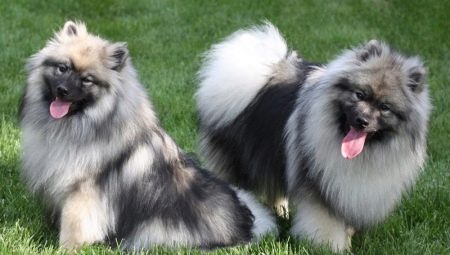Keeskhondy is one of the oldest breeds of domestic dogs with a unique wolf color. Today keeshond (or wolfspitz) is widespread in the Netherlands, Germany, Spain and France, however, few people know about this breed in the territory of the CIS countries. In this article you will get acquainted with the characteristics of the Keeshond breed, the history of its origin, the intricacies of keeping and feeding.
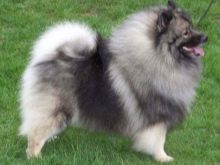
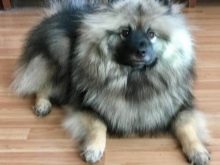

Origin history
Wolfspitz has a unique history. The first records of this breed date back to the 17th century - it was at that time that the Keeshond breed began to spread widely throughout Northern Europe. Initially, individuals of this breed served exclusively as watchmen. - they were often taken on long sea voyages in boats and barges, where the wolves guarded things and food from rodents and birds.
At the time of the patriotic uprising in Holland, at the end of the 18th century, led by the famous Cornelius de Gizliar, these dogs got their first unofficial name - “keeshond”. The fact is that de Gizliard’s favorite was the Wolfspitz individual — it was with this dog that he went through many skirmishes and battles. Soon, this dog became a kind of symbol of conspirators and revolutionaries. Supporters of de Gizliard called this breed of dogs "gesam" or "geese", which later transformed into the modern "keeshond". Or, translated from Dutch - “barge dog”.
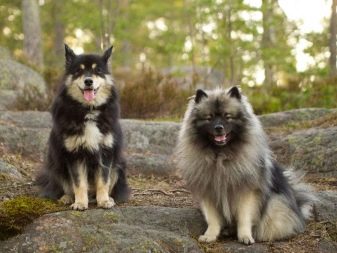

Since the revolt of de Gizliard was suppressed and defeated, everyone began to purposefully destroy this breed of dog. Wolfspitz on the farm could mean only one thing - loyalty to the ideas of the rebels.At this time, the natural Keeshond population was significantly reduced.
But despite the negative political events, some of the wolves remained at the disposal of farmers, sailors and fishermen, which helped the breed survive until today. It was by sea that Keeskhonda in the future came to the territory of Germany, where they received a different name - Wolfspitz or, in other words, “Wolf Spitz”.
It is believed that the reason for this name was the shape of the muzzle of the dogs, as well as the unique color of the Keskhond - black and gray with white tan marks, just like purebred wolves.
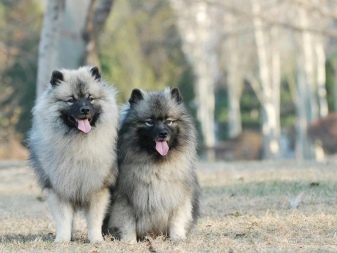

Initially, dogs were known only in narrow circles: they were often brought up by hunters, members of the nobility, and sailors. However, Keeskhonda owes its true popularity to such a historical figure as Baroness von Hardenbrook. The baroness was so fond of the breed that she began to actively breed her at the beginning of the 20th century. Thanks to her efforts, the wolfspitz was able to enter the open market for pet dogs and soon began to be found throughout modern Europe. The first individuals came to Russia only at the end of the 20th century.
To date, the breed has one official name - “Wolfspitz”. The identical name Keeshond can be found in countries where they do not speak German.
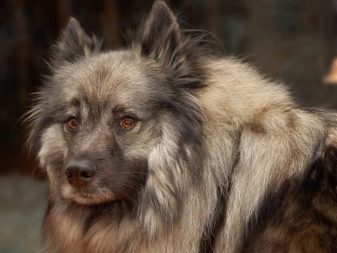
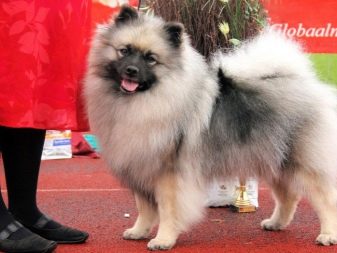
Breed description
Wolfspitz is easily recognized among other dogs - no other species has such a unique wolf color, strong physique and long hair. Below you can familiarize yourself with the typical exterior features of this dog, as well as with exterior standards.
- Medium height. Despite their considerable size (which to a greater extent was formed only due to the very long hair), the Wolf Spitz does not differ in significant growth. Most often, individuals of this breed grow up to a height of 45 centimeters at the withers. Some record holders can grow up to 55 centimeters. However, you should understand that the main thing here is not size, but the harmony of physique.
Tall individuals are often characterized by problems with the spine, limbs, and cardiovascular system, which are under tremendous pressure.
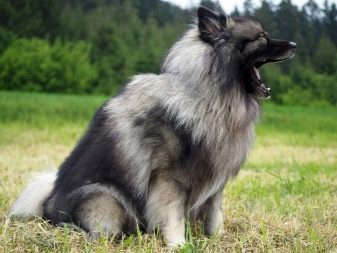
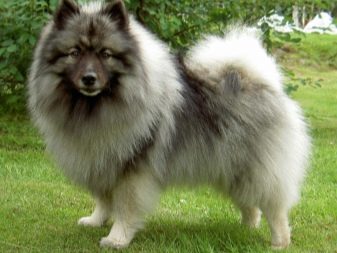
- Weight. Keeshond have a relatively standard weight for thoroughbred dogs - they are rarely heavier than 26-28 kilos. In this case, the owner must clearly monitor the ratio of height and weight. Weight gain often refers to the development of obesity, and not about the growing up of the dog.
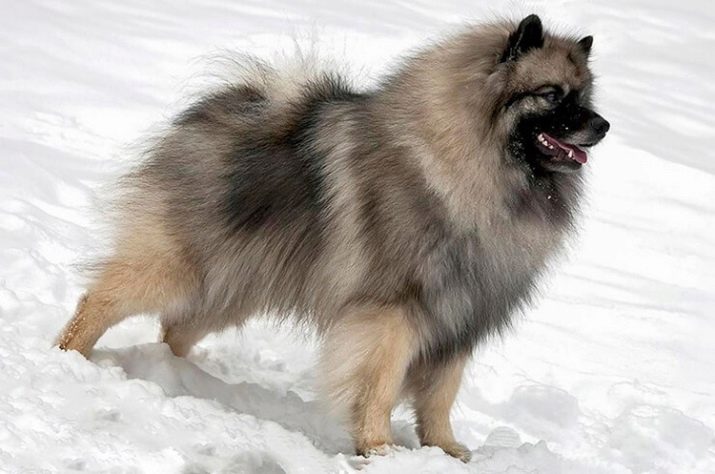
- Average life expectancy. The average Keeshond rarely lives more than 15 years, however, in ideal conditions of care, maintenance and feeding, this breed can live up to 20 years. There are known individuals of wolves who lived 27 years, however, this is more an exception to the rule than a pattern.
The life expectancy of these dogs is extremely affected by heredity, as well as a balanced diet.
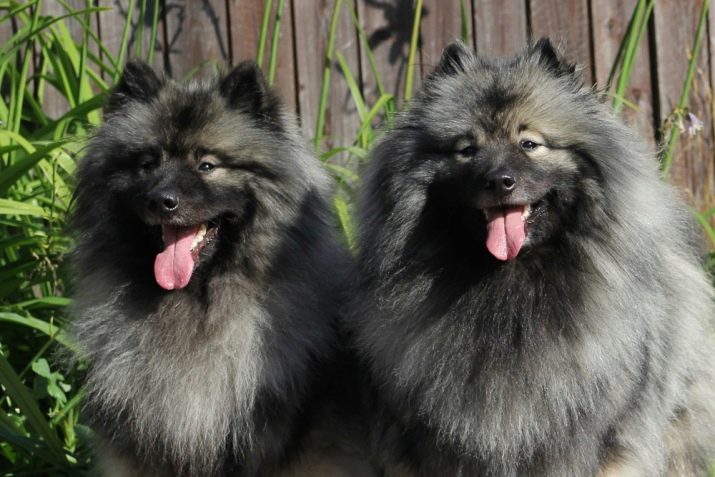
- Wool. Long, up to 25-30 centimeters, springy and quite tough. There is a fairly thick undercoat that allows you to survive even the most severe cold. The color of the coat is exclusively wolf: dark, black, gray and white tones. The coat on the chest, nape, extremities, tail and abdomen, as a rule, is light in color, and wolves are also distinguished by characteristic white “glasses” on their eyes. Wool cover abundantly covers the stomach (tightened) and chest, may even touch the ground.

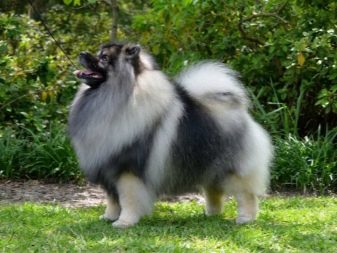
- Eyes. Almond-shaped type and not particularly large, usually brown, dark or black. Set relatively close - nose bridge wide in the eye.
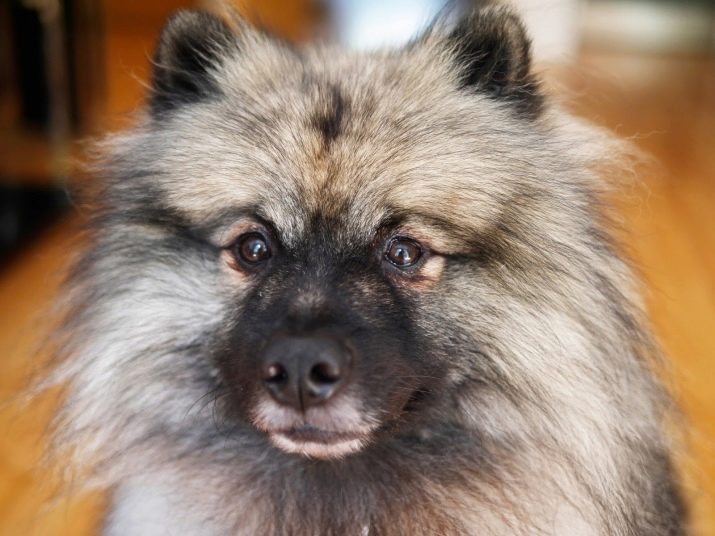
- Limbs. Strong, set wide, bones are thick, the paws themselves are medium in size, perfectly assembled, pads are oval, black, gray or reddish. The front legs appear slightly longer than the hind legs.
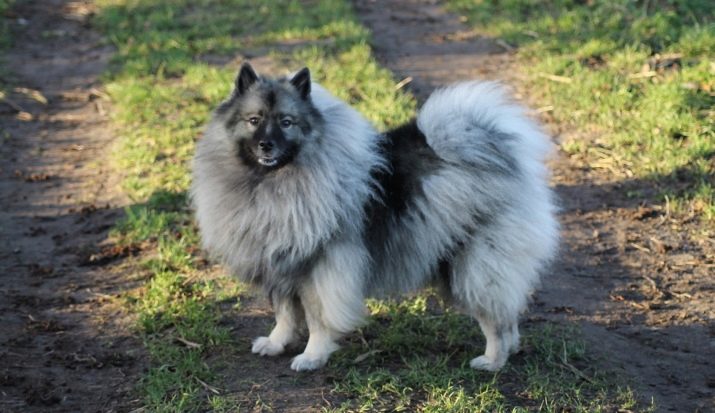
- The ears. Quite long, but because of the abundant hair on the crown they seem small. The shape is exclusively triangular.The color is black, set wide, in a calm position, stand upright, look outward with shells.

- Head. Wedge-shaped with a distinct neck. The transition from the forehead to the nose is smooth, but noticeable, the muzzle gradually decreases to the nose. The nose is well developed, however, small in size, black or dark in color. The chin is well developed, but much thinner than the muzzle itself.
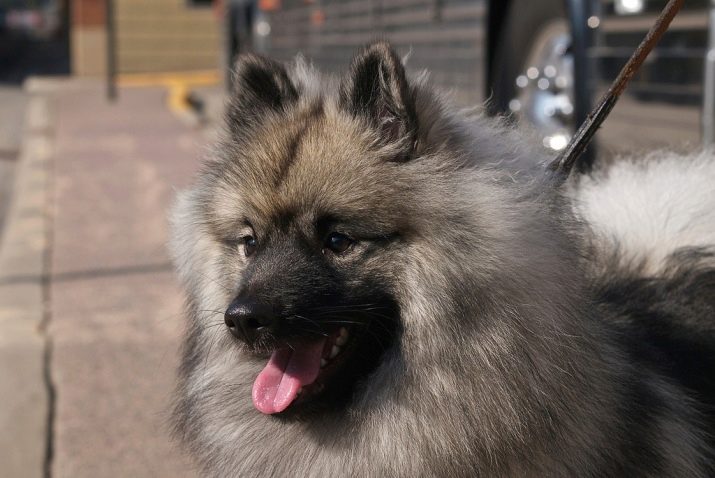
- Tail. Not particularly long, covered with the same long hair as the body. Usually bent into a ring, and rests on the torso. By standards, the tip of the tail must be dark or black.
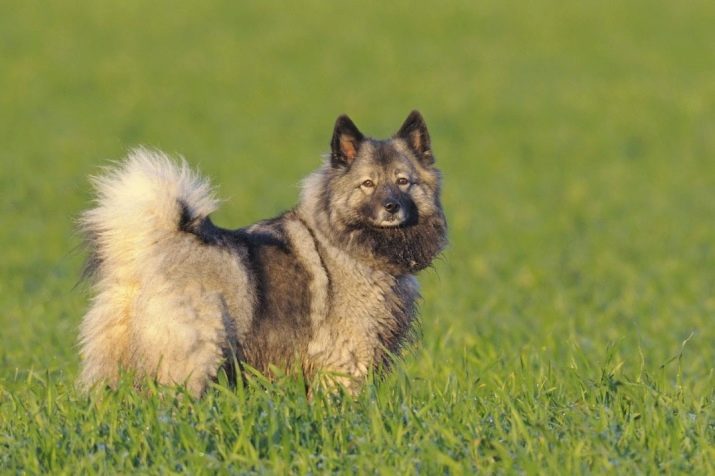
- Teeth. Not particularly long, set tight - without gaps. The flavor must be correct. The color of the teeth in healthy and young individuals should be only white.
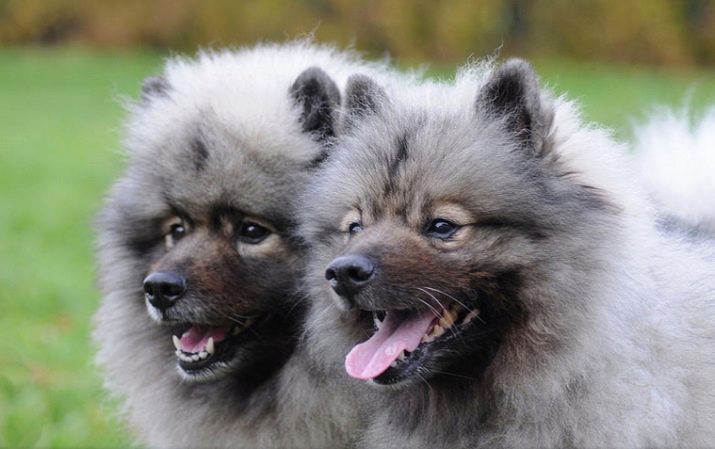
- Body characteristics. Square, finished and unstretched. The neck is short and wide, firmly set, there is a characteristic bend. The back is rather short, but with well-developed muscles.
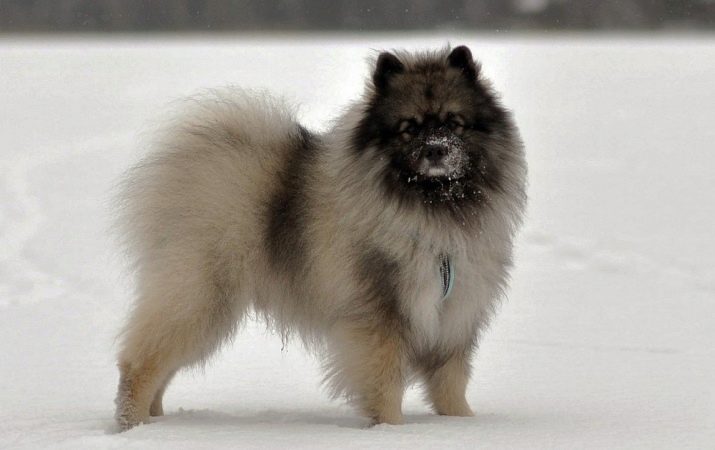
- Leather. Dense, does not form wrinkles, is well stretched. Females can be noticeable in females after bearing puppies, as well as in older individuals.
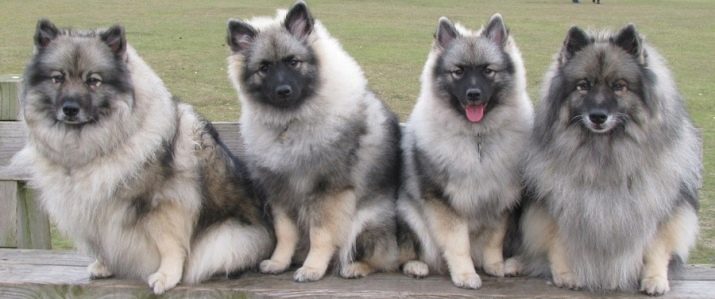
Nature and behavior
Wolfspitz differ significantly from other dogs in temperament and character traits. Below you can familiarize yourself with these features and differences.
- Extreme degree of activity. From birth, wolves are very active and cheerful, which can bring a lot of worries to their owners. It’s difficult to keep track of them, it can be difficult to walk because of the indefatigable interest of the dog in everything that happens around. In childhood, Keeskhondas are a kind of hurricane that cannot be established. These dogs need a constant surge of energy through training, exercise and jogging. Over time and with the course of growing up, wolves become less and less mobile, which simplifies caring for them, but can affect the dog’s body.
Try not to reduce the load on the dog's body, even at a respectable age.
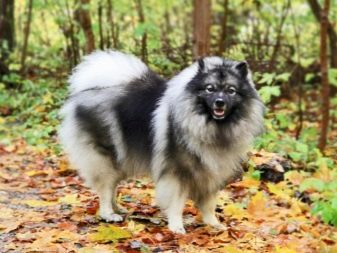
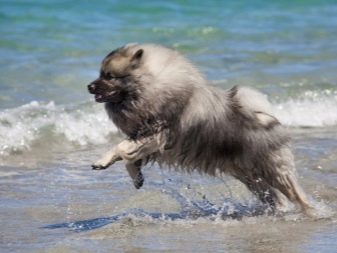
- Absolute good nature to "their". In the family circle, Wolfspitz are amazing kind people. They are equally loyal and friendly to all family members, adequately respond to the harassment of children, neighbors and guests.
Keeskhondi are extremely attached to the owners, able to protect them and even prone to manifestations of jealousy (children, other pets, other people).
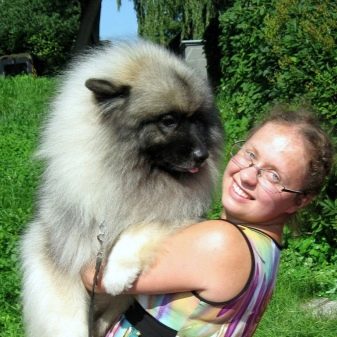
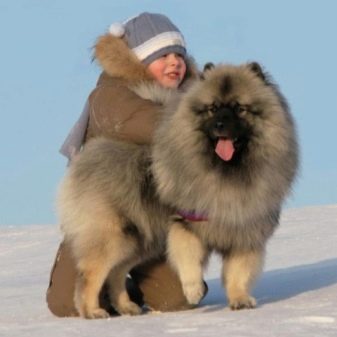
- Relation to other pets. If the permissible boundaries of the personal zone are not violated and the other pet is friendly - wolves are always inclined to make contact. They are the pioneers of games and entertainment, love to fool around and jokingly bite other pets. In the heat of the game, they are able to injure other pets, and therefore they rarely meet with cats in a positive scenario.
Wolf will always try to occupy a dominant position among all pets and is ready to defend it in front of the owner.
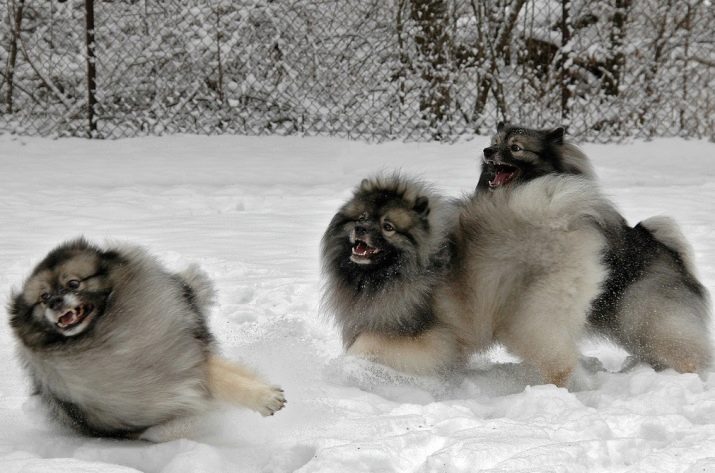
- Independence. Despite their seemingly good-natured character, Keeskhondas are born defenders. They are so confident in their abilities that they can throw themselves at animals several times larger than them in size. If they see that the owner needs help or protection, they will immediately rush to his aid, even if it will cost them their lives.
To achieve this behavior, it is very important to educate and properly established contact with the owner.
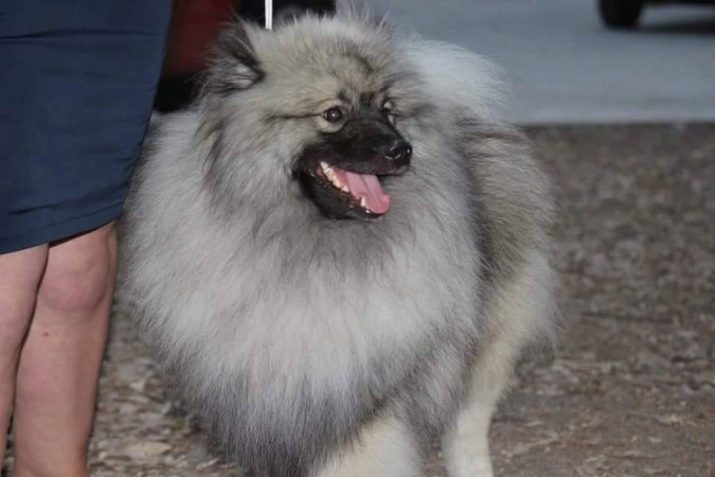
- Attitude to strangers. No wonder the wolves are considered wonderful defenders - they are always suspicious of strangers on their territory and are ready to follow them until the stranger leaves her. If the dog sees that the owner is behaving with this person liberally and freely - they are capable of showing friendliness and will even let themselves stroke, but most of the time they will stay away, preferring to watch.
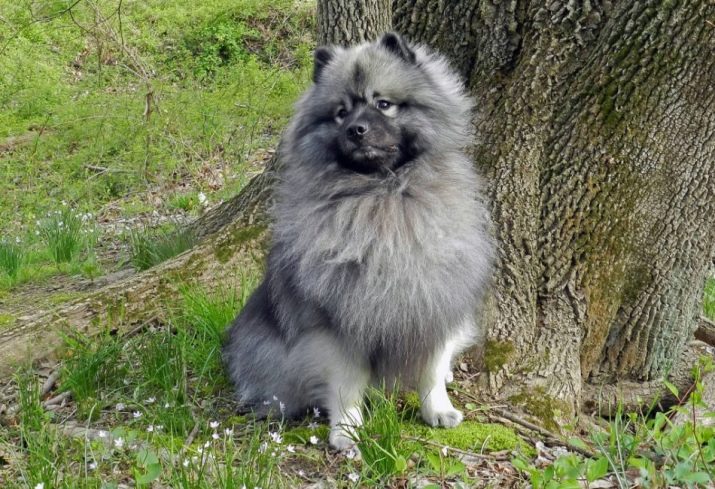
- Empathic abilities. Wolfs cannot be called insensitive dogs that are ready to pester the owner at any time. They remarkably feel the owner’s internal state, which allows them to easily navigate by the intonation and pronunciation of the commands, which is what the owner needs from them right now. If the dog sees that the owner is currently in need of rest and wants to remain alone - Keeshond will also retire to some place and will wait until the owner wants to talk to him. There is a certain technique, according to which it is dogs that lead to seriously ill or lonely people - the so-called canister therapy or enimotherapy.
It is believed that in the society of these pets, people improve their mood, there is an incentive to life, the work of the cardiovascular system is being established. Due to their unique abilities, wolves are also often used in search and guard services.
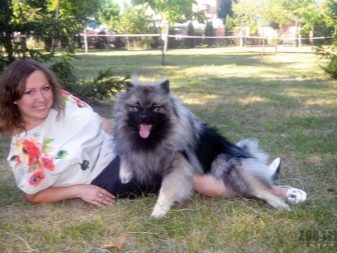

- Predisposition to training. Keeskhondas have an incredibly subtle mind and are able to remember more than 30 different tricks in their entire lives. In Russia, these animals appeared solely due to their artistic abilities in the circus arena.
Wolfs need to be raised from birth, after two months of age, the dog becomes almost uncontrollable, which greatly complicates training.
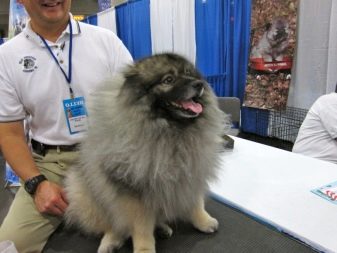

Care Rules
Keeskhondy have long established themselves as a breed that feels great both within the walls of a closed apartment, and in a private house with a constant walk. This is not to say that this breed is difficult to care for or raise, however, inexperienced breeders may experience significant difficulties while keeping young wolves.
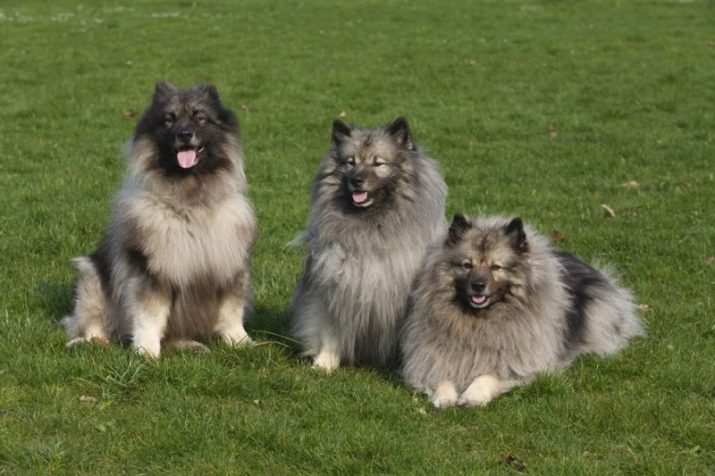
Below you can familiarize yourself with the recommendations that will help you formulate the conditions for proper care of German Wolfspitz.
- Wool. As you may have noticed, keeshond have a very long and dense coat, which requires constant care. In addition to the fact that the animal’s hair has its own specific smell, it can simply prevent the pet from fully moving. Mud is very often formed in wool tangles, and it becomes a haven for many microbes and insects (ticks, lice). In addition, non-trimmed dogs in the summer season feel just awful due to direct sunlight on thick hair.
To save your pet from such dangers, do not forget to comb it regularly (at normal times 2-3 times a week, during moulting - every day).
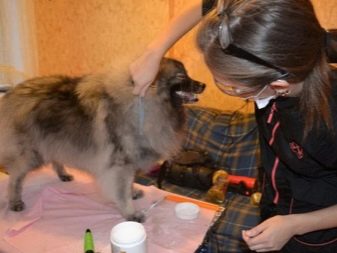
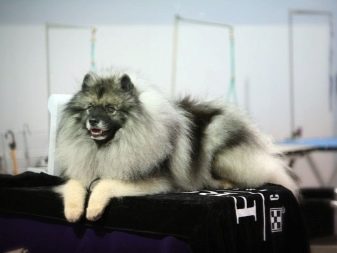
- Bathing. Specialists extremely do not recommend often bathing wolves with ordinary water or with shampoo. Due to the long coat and thick undercoat, these dogs dry very slowly. In turn, this can lead to colds and inflammatory processes. In addition, a long wet coat that is not completely dry can very likely become sour. This can lead to allergic reactions and skin rashes.
Breeders recommend regularly taking the dog for a haircut to avoid these problems.
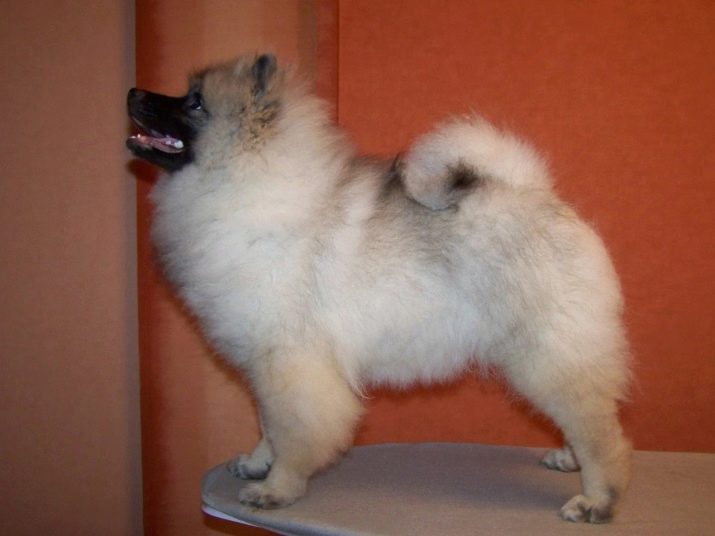
- Food. Keeshond's average lifespan can be significantly increased by creating a balanced, nutritious and vitamin diet. Experts recommend using ready-made feeds in feeding Keeshond - these mixtures contain a priori all the necessary nutrients. Some owners prefer to serve the pet just natural food, in which case the owner of the dog will have to independently calculate the calories, protein, fat and carbohydrate content.
In addition, special vitamin supplements must be added to the natural diet in any season to enhance the health of the pet.


- Active life. Of great importance to the general condition and life expectancy of a pet is the correct lifestyle.Keeskhondas have a playful, active and cheerful character, and therefore require constant attention of the owner, constant walks and games. To prevent the dog from experiencing health problems in the future, you should regularly load the puppy with physical exercises and training.
Due to an inert lifestyle in youth, already at a considerable age, these animals can begin to have problems with the limbs and spine.
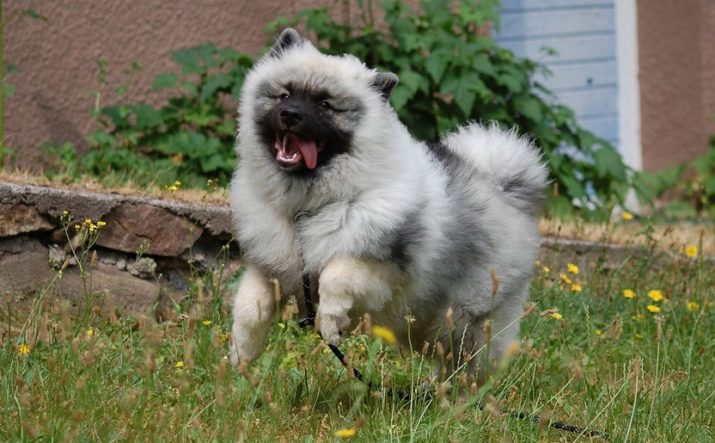
- Constant contact. These dogs are not intended for routine maintenance in an aviary or cage. They must constantly be near the owner, contact with him, play and train. In the event that the dog has been away from the owners for a long time or just alone, there is a high probability of occurrence of mental disorders, depression and even aggression.
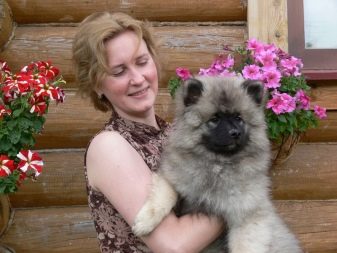
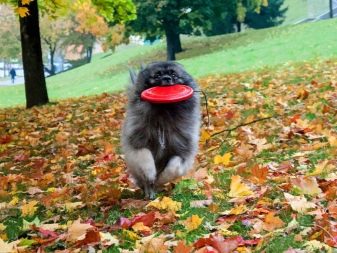
- Games. The active life of any dog requires not only outdoor walks, but also a large number of toys. Before acquiring the dog itself, be sure to buy some toy bones and toys in the house with which the animal could not only play, but also grind its fangs and claws.
It is best to choose bones from natural elements useful for the body (vitamin bones), toys and accessories should be made of durable plastic - there is little resistance to the canines of these dogs.
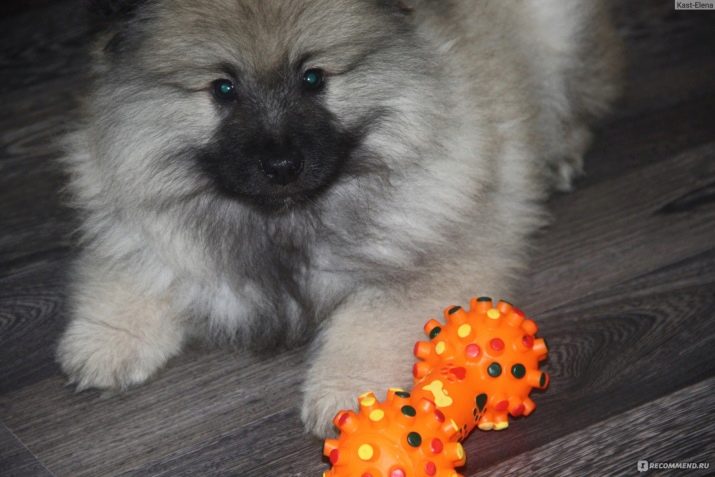
- Hygiene. In addition to swimming, your Wolfspitz should regularly go through certain procedures to care for the rest of the body. This applies, first of all: washing eyes - 2-3 times a week (with cotton swabs moistened with boiled water), cleaning ears from dirt and sulfur - 1 time per week (cotton swabs or napkins), cutting claws - at will, brushing teeth (at least 2 times a week).
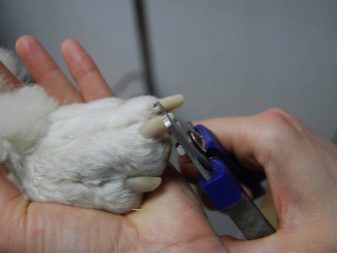
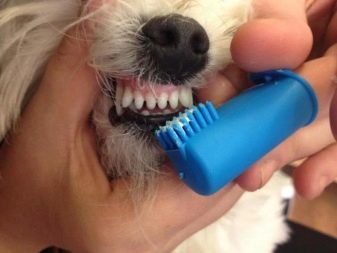
- Walks. Keeshond's excellent appetite will not always play into your hands. Wolfspitzes are not particularly legible about food, and during walks on the streets they can literally take whatever they find in their mouths. Especially these dogs love to dig out old bones, are not indifferent to chewing gum, and sometimes they can even devour the excrement of other dogs. All these actions can lead to the appearance of acute viral and intestinal diseases in the dog.
To get rid of this unpleasant habit, try to feed the pet just before the walk - on a full stomach, the appetite of German wolves is significantly weakened.
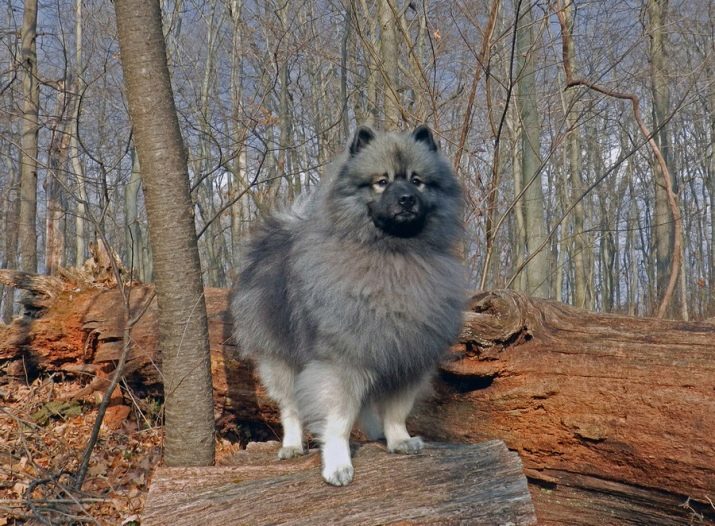
The following is a list of things, tools and accessories that you will definitely need when caring for Keeshond. Most of these accessories can be purchased at any pet store.
- Hygiene and wool care items: nail clipper, ear care kit, special shampoo for long-haired dogs, a hair dryer for drying hair, an undercoat for undercoat, a special comb with long and frequent teeth, drops for washing eyes.
- Toys. Balls, bones, mice, brushes, artificial carcasses of chicken and others.
- Items for feeding: 2 polymer or iron bowls - one for feed, the other for clean water. The bowls must be heavy so that the dog does not accidentally turn them over.
- Items for a walk. A strong flea collar, a leash, a muzzle, a blanket (it is especially important to wear a blanket on a dog in the winter season after a haircut - there is a great risk of catching a cold).


Power Features
Nutrition is the most important issue in the content of any pet. For experienced breeders, feeding Keeshond will not cause any difficulties. But for those who come across this breed for the first time, it can be really difficult to understand what's what. The following is a list of recommendations that you must adhere to when feeding German Wolfspitz.
- No human food. Despite the fact that wolves are distinguished by an amazing appetite and often like to extort or steal from the table the remains of human food - try to stop these actions immediately. The body of these pets is not adapted to digest salty, spicy, sour, fried or pickled foods.
Do not pay attention to the pet’s explicit requests to give it another piece of something harmful - the animal does not understand what is bad for it and what is good.

- Regularity. After birth, the wolf body needs a more frequent and rich diet. It should be carried out at least 5-6 times a day in small portions. Over time, try to reduce the frequency of feeding, so that by the age of 9 months the pet’s diet consists of 2, maximum 3 regular feedings. For adult dogs, the best option is two meals a day - once early in the morning (at 6 o’clock) and a second time in the evening (5-6 hours).
Depending on the time of the year, you can slightly shift the time of serving the food, as the period of activity of the dog itself decreases with the shortening of daytime. So, for example, you can start the first feeding at 9 o’clock, and the second at 4 (in winter).

- Systematic. Do not forget that a dog’s nutrition should be not only balanced and regular, but also systematic. You should develop a special feeding schedule for your pet and ensure that portions of food are always served at approximately the same time.

- The method of feeding and dose. There are two feeding methods: feeding with natural feed and ready-made mixtures. If with regard to ready-made feeds, everything is simple (it should be feeds not lower than the premium class), then with natural products everything is much more complicated. Here it is worth calculating the feed based on a certain formula, in which the average food need of the dog should be at least 2.5-3% of its real weight. Thus, if your dog weighs 17 kilos, then on average she will need at least 450 grams of natural food daily.
At the same time, you need to make sure that the feed is balanced, that is, it contains the necessary amount of protein, fat and carbohydrates. With this calculation of feeding doses, it is worth monitoring the current condition of the dog, its lifestyle and activity.
So, if this is the summer season and the dog is in the great outdoors, the servings should be increased. If you noticed a tendency to an unhealthy ratio of weight and height of the dog - the portions should be reduced and their calorie content should be estimated.


- Meat. It is the main element of the diet in Keeshond. It should always be finely chopped pieces of boiled or raw type. The amount of meat per day is also possible to calculate, for this the following formula is used: for each kilogram of the animal’s weight, 15 to 20 grams of meat is allocated. Thus, if your dog weighs 17 kilos, then his diet should contain about 300 grams of meat products. If your pet is subjected to frequent physical exertion and training, then the portions should also be increased.

- Obesity. The tendency to obesity in wolves was discovered a very long time ago, most often it leads to a sedentary lifestyle and poorly balanced diet. When feeding dry food, always pay attention to the recommended dose of food for a particular dog size. For natural foods, use the instructions above.

- A sharp decrease in appetite. A frequent phenomenon in the diet of Keeshond, with the appearance of which it is worth immediately taking the dog to the veterinarian. The reasons for this can be vitamin deficiency, gastrointestinal diseases, lack of variety in food or mental pathology.
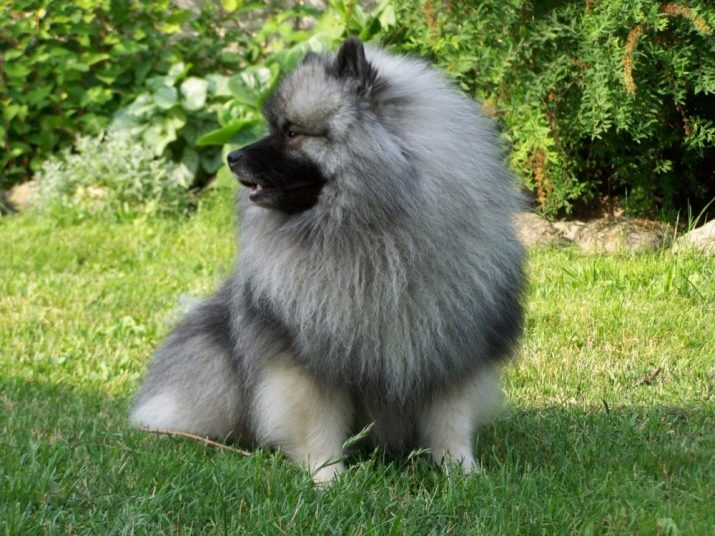
- Tanks and feeders. After eating, try to immediately clean the bowl of food - the animal loves to lick it and carry it around the apartment, trying to put together even the smallest pieces with its tongue. A bowl of water, on the contrary, should always be in the public domain of the dog and be in an easily accessible room.

- "Food from the street". Develop a command system with which you could regulate the actions of the animal relative to what it finds on the street. You must teach the dog that, at your first command, he will throw a bone or piece of food and immediately go to you.
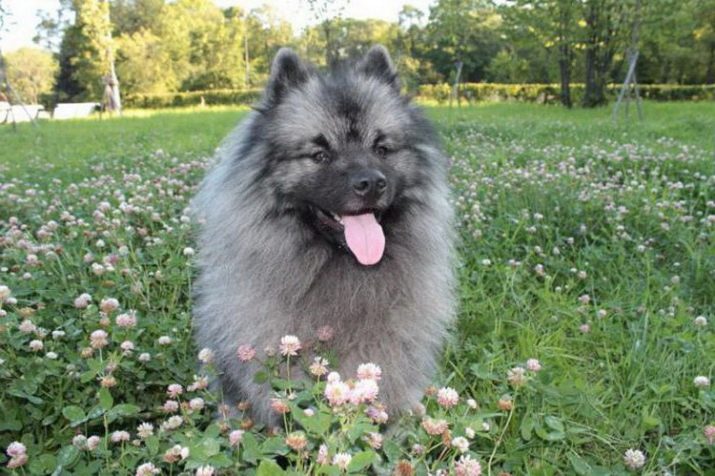
- Feed supply. Try to pour food into bowls while the dog is not in the room.Wolves are characterized by excessive activity, because of which, in the presence of the owner, they can joyfully knock over and sprinkle a whole bowl of food.

Parenting and training
Training this breed of dog should be treated with extreme caution. Due to their hectic and active nature, these animals are very difficult to keep in one place, discipline and obedience, they prefer games and jogging. Despite such a absurd character, Wolfspitz is extremely inquisitive, intelligent and able to learn a bunch of useful and funny tricks in a lifetime. Below you can find a list of recommendations for training Keeskhond.
- Start training. Start teaching your pet as early as possible. Experts advise to start the training themselves after 2 weeks after birth. Already at this age, your pet should figure out where to go and where not to. What can be explored and tried, and what is not worth it.
- Nickname. The name of the dog is a kind of foundation for all further training. It is with the nickname that the main commands for the dog should be associated: “next”, “take”, “sit”, “wait” and others. The pet is unlikely to understand that this is what his name is, but he will definitely guess that this particular set of characters refers specifically to him. It is better to choose short, clear and sonorous nicknames with such consonants as: r, p, k, t, s, s and h. Their dogs remember best.
- Training method. At the very beginning, it is worth turning to a benevolent teaching method. This means that you should not scream, beat or humiliate a pet. Any dog, and especially pedigree wolves, perfectly feel the owner’s anger and aggression. Be patient and repeat the commands again and again until the animal understands what's what. Instead of a whip, choose a gingerbread - be sure to praise the pet every time he does something, give him sweetness or just scratch his ear. However, you should not overdo it with treats, otherwise the Wolf Spitz can simply be lazy.
- Associations with entertainment. Do not try to get your pet a great desire for training. This is still a healthy young dog that needs fresh air, games and running. That is why try to conduct most of the training on the street. So the pet will perceive them not as some kind of work or burden, but as real entertainment. In general, try to add more elements to the training in the game, this will help liberate the pet and give it confidence.
- One coach. If you want to get obedience and execution of some commands from your pet as soon as possible - do not let anyone else train him (for example, other family members). It will be difficult for the dog to perceive identical commands, but said with different intonation and articulation.
- Simple first. In no case should you start training with complex teams - start small. First, the dog must clearly remember his nickname, then proceed to the study of the most primitive commands: “bring”, “to me”, “paw”, “voice” and others.
- Don't push. Sometimes it can be seen from the pet that it is at this moment that he is not capable of performing any tasks. Wolves can articulate, bite, snap and even bark at you, not wanting to perform exercises. In this case, do not annoy the dog even more - just try to start the exercises later.
- The complexity of the task. As soon as you understand that the pet has learned the basic tricks and commands - try to complicate them. Add new words to the teams that will indicate some other actions. To explain the dog a new command or action, it is worth using food. Sometimes your own image of a team helps - if your pet is already trained and understands you, he will understand that the action needs to be copied. Also increase your training time.At first it should be small lessons no longer than half an hour a day, with the growth of the pet, increase them to an hour. In addition, training should take place regularly, and not from time to time.
- Back to basics. It often happens that wolves very quickly absorb new material and, it would seem, are ready for new achievements. However, you should not rush. Try from time to time to return to already completed material so that the pet does not forget the old tricks and commands.
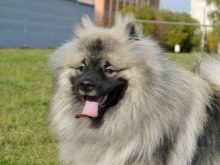
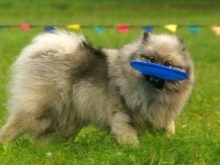
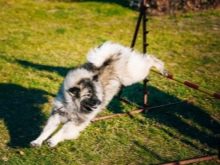
About the features of the Keeshond breed, see the next video.
